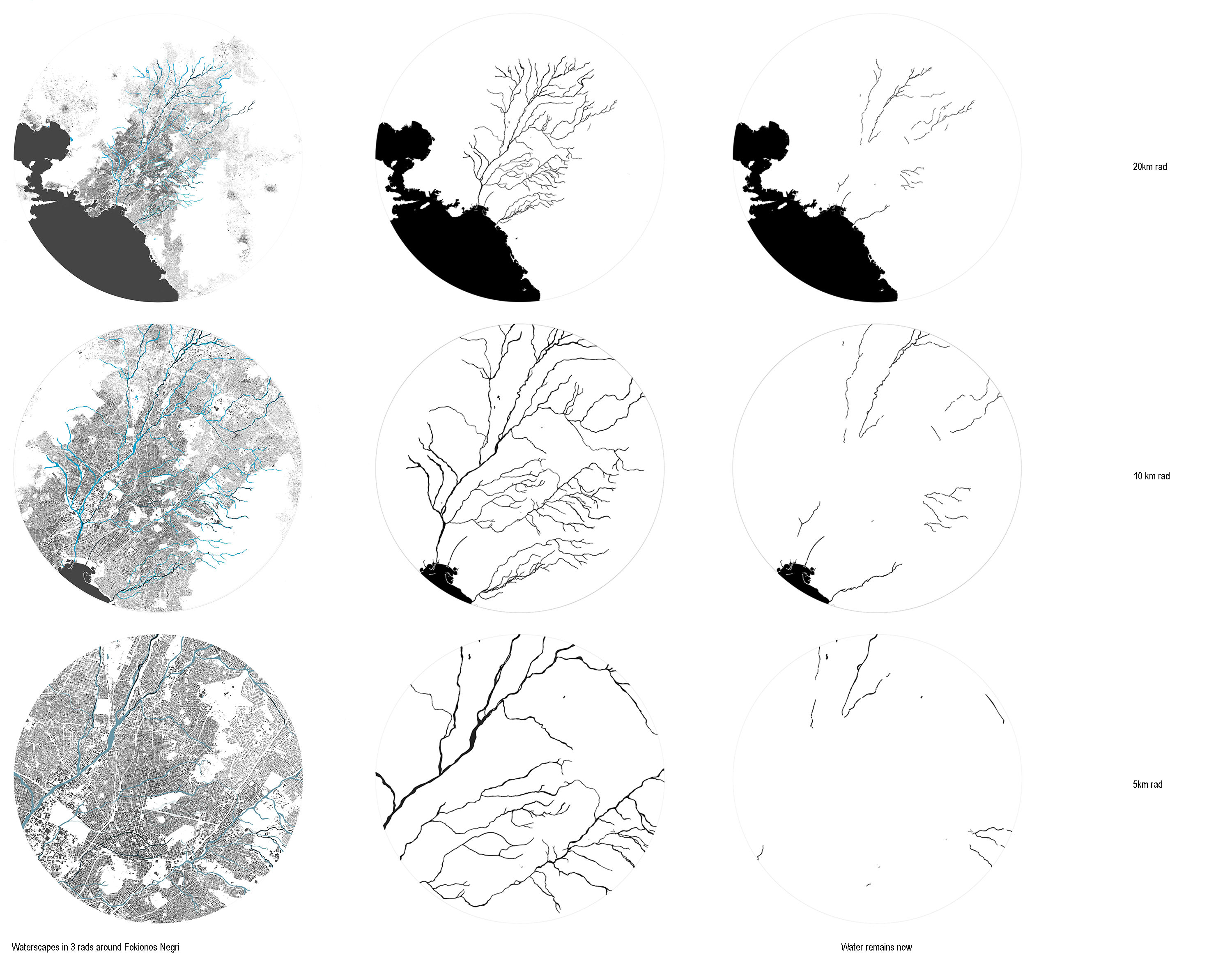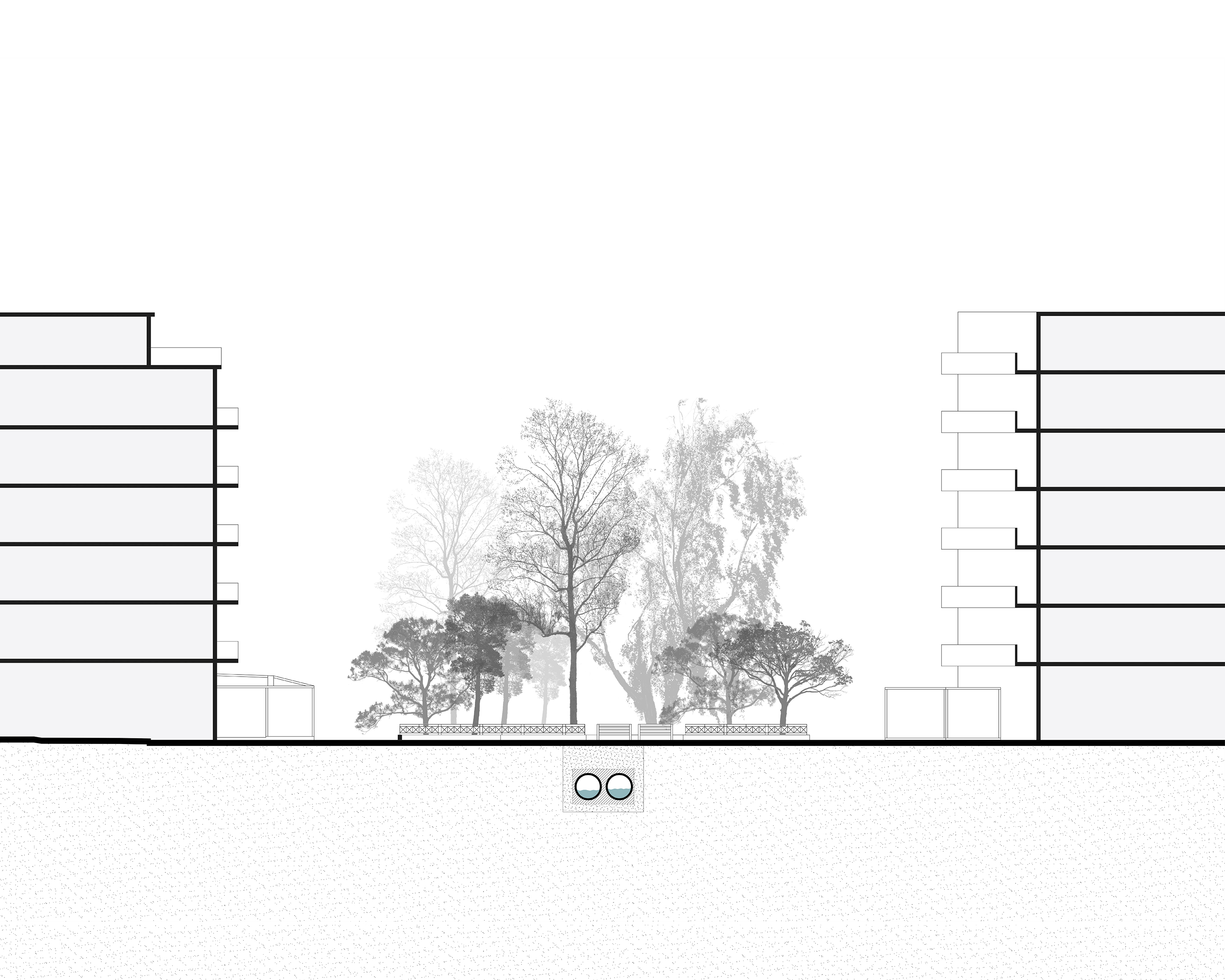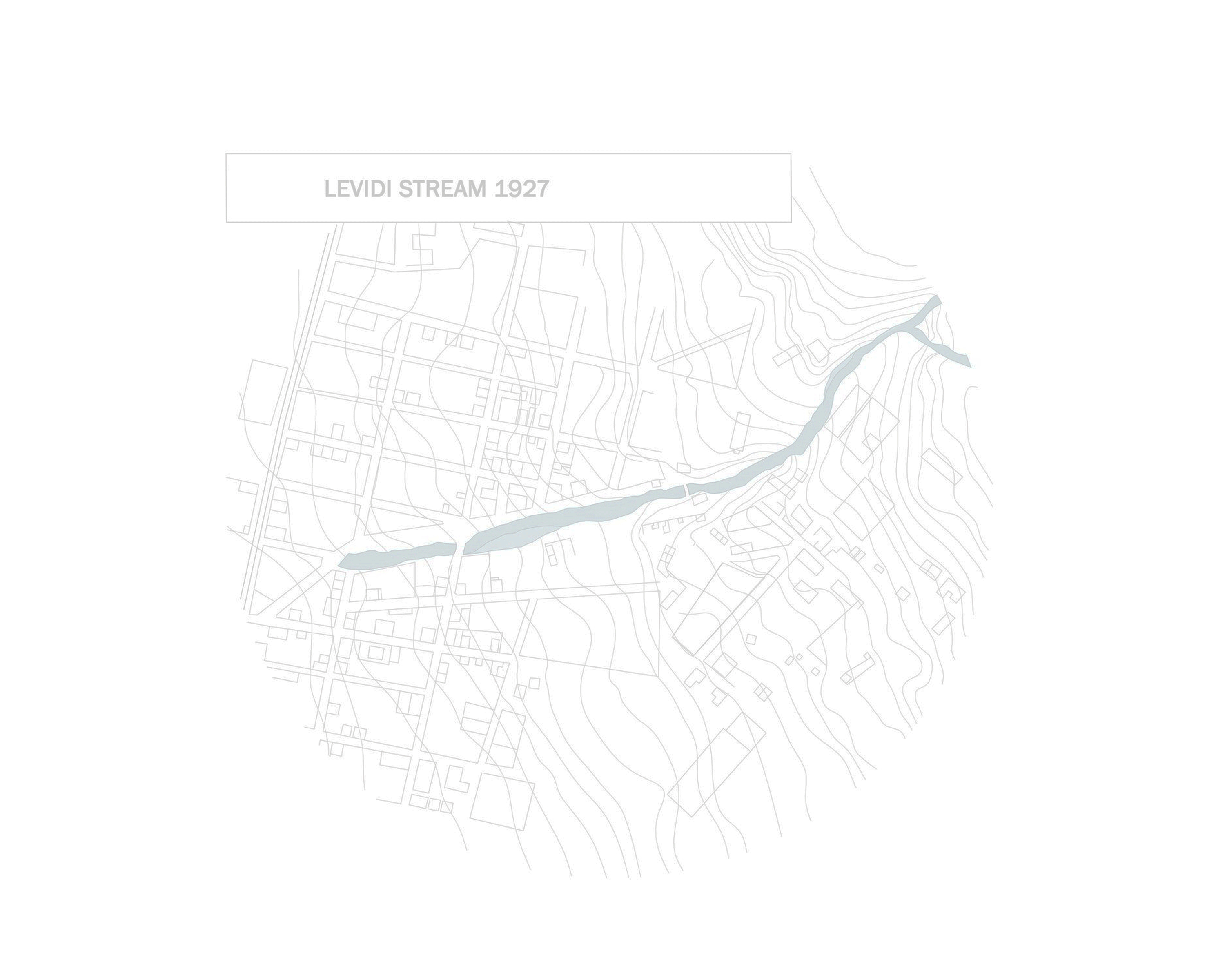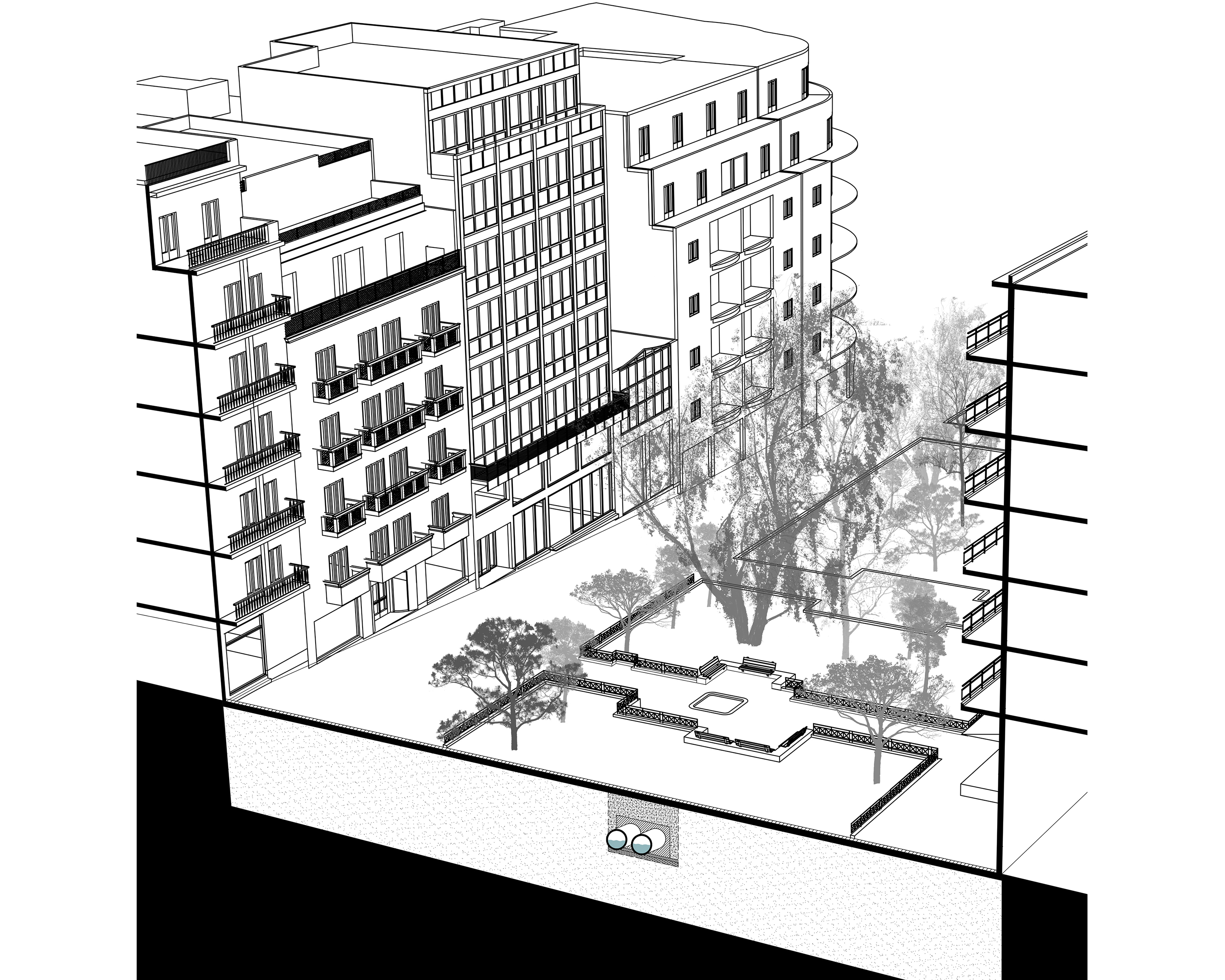︎Waterscapes︎
Regarding the water element in Attica, it should be noted
that at the end of the 19th century there were 700 rivers, streams and creeks.
However, by 1999 there were less than 70, while today there are no more than
50, as about 550 kilometers of streams have been sanded and cemented. Till the 19th century and early 20th century, the Levidi
stream used to form Kypseli’s northern
border. The stream, starting from the slopes of Tourkovounia, flowed along
Krissis Street, crossed Kypseli Square and the current pedestrian street of
Fokionos Negri, thus defining its border with Patissia. Its two sides were
joined at two points, with two bridges, a large one, at the height of Eptanisou
Street and a smaller one at the height of Chaeronia Street. In the 1930s, the constant urban pressure around the
stream, the prevailing sanitary conditions, the continuous increase of the
population but also the lack of infrastructure in the water supply and sewage
system, led to its degradation and finally to its undergrounding. In its place,
a linear garden was created, with the planting of trees and shrubs, with
fountains and playgrounds, which was located between two paved roads and was
known as the "Green avenue". In the 1970s, the Fokionos Negri pedestrian street was
created as we know it today, with the Levidi stream remaining underground, its
water running through two pipelines, the sound of it being the reminder of its
existence.
︎Waterscapes︎
Regarding the water element in Attica, it should be noted
that at the end of the 19th century there were 700 rivers, streams and creeks.
However, by 1999 there were less than 70, while today there are no more than
50, as about 550 kilometers of streams have been sanded and cemented. Till the 19th century and early 20th century, the Levidi
stream used to form Kypseli’s northern
border. The stream, starting from the slopes of Tourkovounia, flowed along
Krissis Street, crossed Kypseli Square and the current pedestrian street of
Fokionos Negri, thus defining its border with Patissia. Its two sides were
joined at two points, with two bridges, a large one, at the height of Eptanisou
Street and a smaller one at the height of Chaeronia Street. In the 1930s, the constant urban pressure around the
stream, the prevailing sanitary conditions, the continuous increase of the
population but also the lack of infrastructure in the water supply and sewage
system, led to its degradation and finally to its undergrounding. In its place,
a linear garden was created, with the planting of trees and shrubs, with
fountains and playgrounds, which was located between two paved roads and was
known as the "Green avenue". In the 1970s, the Fokionos Negri pedestrian street was
created as we know it today, with the Levidi stream remaining underground, its
water running through two pipelines, the sound of it being the reminder of its
existence.



